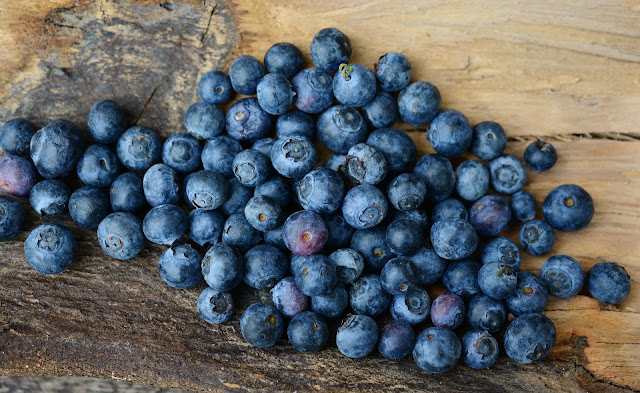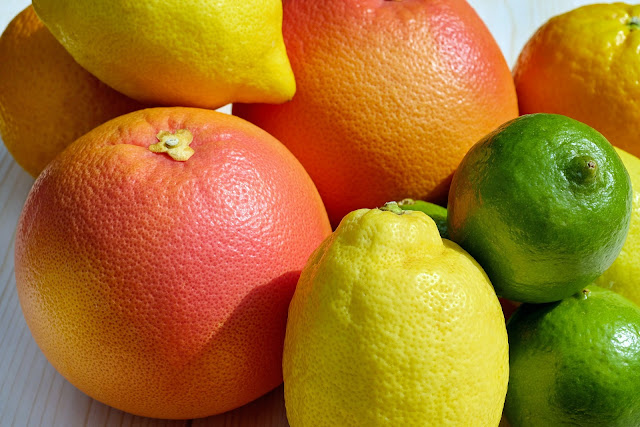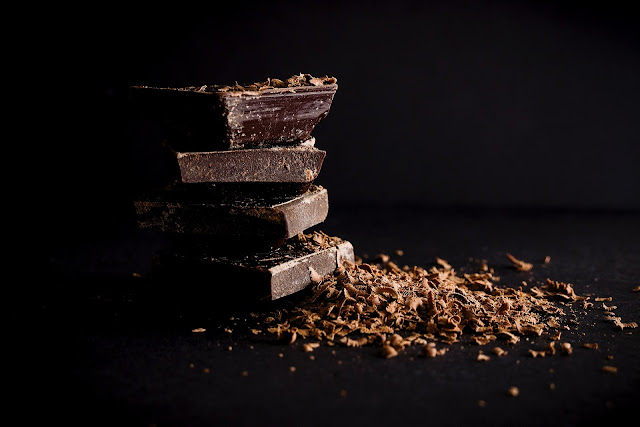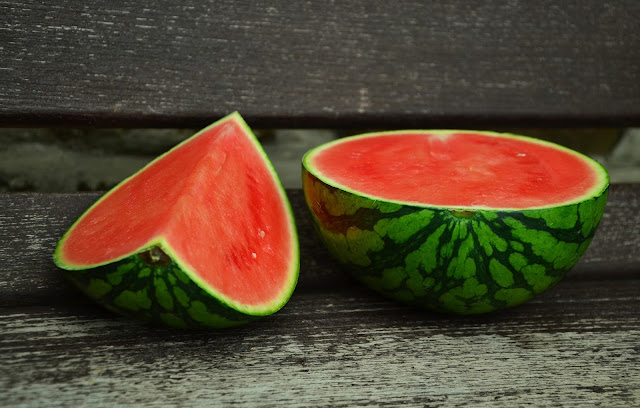 |
| Image via pixabay. |
In today's modern world we are consuming foods that our ancestors didn't consume. We as consumers are demanding foods that are so different and so food scientists are producing them hence we are changing our foods. Certain foods can be major contributors to inflammation. So, therefore, the foods that we eat can cause inflammation and some can fight inflammation.
Excessive or uncontrolled inflammation plays a role in lots of diseases that affect humans these days.
Allergies, inflammatory bowel disease, diabetes, arthritis, cardiovascular disease, asthma, dementia, eczema, lupus, Crohn's disease and psoriasis are all inflammatory diseases which occur when the body's own immune system turns against itself.
Some foods that cause inflammation in the body
1. Refined carbohydrates
Carbohydrates are responsible for many roles in the human body. However, carbohydrates can cause inflammation but it is dependent on the source. In other words, not all carbohydrates will cause inflammation. Refined carbohydrates promote inflammation whereas whole grains, fruits and, vegetables are good sources of carbohydrates that are full of fiber, vitamins, antioxidants and, minerals.
Examples of refined carbohydrates: sugars, high-fructose corn syrup, instant oatmeal, white rice and white flour
 |
| White flour. Image via pixabay. |
Refined carbohydrates have a higher glycemic load and are processed. The fiber and most of the nutritional value is removed from refine carbohydrates and as a result, we can consume too much refined carbohydrates. So therefore if we consume too much that our body doesn't use then the rest will be converted to pro-inflammatory saturated fat- palmitic acid which increases inflammation. They can also lead to obesity from over-consumption which will increase systemic inflammation.
Carbohydrates are converted to sugar in the blood but refine carbohydrates are converted quicker. When the blood sugar rises it will trigger the pancreas to produce insulin to move the sugar from the bloodstream and into the cells. Consequently, excess insulin promotes the storage of pro-inflammatory body fat.
- Sugar/high fructose corn syrup
Excessive sugar intake can increase your risk of inflammation. Cytokines are pro-inflammatory molecules that are released when you eat sugar.
You can find sugar in sodas and candies.
- Artificial sweeteners
Excess calories from sugar can cause diabetes, obesity and so on and so the food industry has created artificial sweeteners to substitute sugar. Artificial sweeteners are used by consumers because they provide a sweet taste like sugar (that lots of people crave) without having as many calories as sugar and some have zero calories.
Examples of artificial sweeteners: sucralose, aspartame, sorbitol, maltodextrin and, xylitol
How do artificial sweeteners cause inflammation?
There is a community of microorganism that lives in our digestive tract. This community is referred to as the gut microbiome or gut microbiota. There are many different species that form this community and some form a symbiotic relationship with us, others a commensal relationship and some a pathogenic relationship with us. Our good microorganisms/bacteria are necessary for the breakdown of complex carbohydrates, the synthesis of vitamins and so on. The good microorganisms outcompete the pathogens for nutrients and thus keep them in check. There is a balance that exists within the microbiome and changes in a species can disrupt the entire microbiome community. When this occurs it will also affect the host.
This microbiome can be altered by artificial sweeteners. When gut microbiome dysbiosis occurs inflammation will result.
Aspartame
Example of food that it can be found in diet sodas.
Aspartame is a neurotoxin that causes inflammation in the brain.
Animal studies:
Acesulfame Potassium (acesulfame K or Ace-K)
Ace-K is a calorie-free sweetener that can be found in foods and drinks such as soda and candy.
Bian et al. (2017) studied the effects of Ace-K on the gut microbiome and the changes in fecal metabolic profiles using 16S rRNA sequencing and gas chromatography-mass spectrometry (GC-MS) metabolomics. They found that the gut microbiome of CD-1 mice that consumed Ace-K was upset after a 4-week treatment. Also, ace-K caused an increased body weight gain of male but not female mice (1).
Sucralose
Bian et al. (2017) studied the gut microbiome response to sucralose and its potential role in inducing liver inflammation in mice. These mice consume sucralose for 6 months at the human acceptable daily intake. They found that this sucralose alters the gut microbiome and its functions in mice. In particular, sucralose alters the gut environment to release more pro-inflammatory mediators and alter functional metabolites, which may contribute to the increased expression of pro-inflammatory markers in the liver, such as iNOS and MMP-2. All this results even though the majority of the sucralose that the mice ingested passed through the gut unabsorbed (2).
Uebanso et al. (2017) also studied the effects of low-dose non-caloric sweetener consumption on gut microbiota in mice (3).
Uebanso et al. (2017) stated:
"In conclusion, we found that consumption of low-dose sucralose, but not acesulfame-K, affected the relative amount of the Clostridium cluster XIVa in fecal microbiome and cholesterol bile acid metabolism in mice, even at levels within the ADI."
Would/do you eat artificial sweeteners?
2. Alcohol
You can find alcohol in beers and wines.
 |
| Wine. Image via pixabay. |
A high/excessive consumption of alcohol regularly causes inflammation which will lead to lots of conditions and diseases. For example, chronic alcohol consumption can lead to increased cytokine secretion and inflammation in the heart and brain resulting in damage to these organs (4).
Tsung et al. (2013) investigated the effects of ethanol on physiopathology and cytokine levels following hemorrhagic shock in acutely alcohol-intoxicated rats. Their study found that heavy alcohol intoxication increases proinflammatory cytokines and aggravates hemorrhagic shock-induced organ damage in rats (5).
People abuse alcohol on a regular basis. Alcohol is a psychoactive drug and it is also a macronutrient. The main site of alcohol metabolism is the liver (alcohol is converted to acetaldehyde by the liver and is toxic) hence it's the organ that is most likely injured due to excessive alcohol consumption. Alcohol metabolism will lead to fat accumulation in the liver which will lead to a fatty liver/steatosis (it is not the only mechanism by which this occurs). This can lead to inflammation of the liver called alcoholic hepatitis. When you continue to drink excessively with alcohol hepatitis it can lead to cirrhosis of the liver. Liver cancer can result when drinking with cirrhosis.
Other conditions and diseases that chronic alcohol consumption can lead to are an increase the risk of metabolic disturbances, heart disease and, dementia.
Research articles for additional reading on alcohol contribution to inflammation
- Alcohol, Adipose Tissue and Lipid Dysregulation
- Modulation of Inflammation by Alcohol Exposure
- Cytokine Changes following Acute Ethanol Intoxication in Healthy Men: A Crossover Study
- Alcoholic Liver Disease: Role of Cytokines
3. Vegetable oils
Two types of polyunsaturated fatty acids are omega-3 and omega-6 and we require both of these fatty acids from our diets. However, we need a certain ratio of these fatty acids and if we consume excess amounts of omega-6 fatty acids and a very high omega-6 to omega-3 ratio (too much omega-6 fatty acids and too little omega-3 fatty acids) then that can lead to health issues like inflammation. That is it can make us susceptible to or worsen inflammatory diseases (6).
Changes have taken place in our diet over the years. One such change is in the ratio of omega-3 to omega-6. Our ancestors had a healthy balance of omega-3 and omega-6 fats. They used to consume fish, meat, eggs, nuts, etc that contain omega-3 fatty acids. But that diet has changed due to modern agriculture. With modern agriculture animals are fed feeds that consist mainly of grains as opposed to animals that used to graze back in the time of our ancestors. This also lead to the production of vegetable oils from sunflower, cottonseed, soybean, corn, etc. How is vegetable oil related to this? The problem with vegetable oils is that vegetable oils are rich in omega-6 fatty acids and poor in omega-3s and we consume too much vegetable oils and not enough of omega-3 fat food sources. As a result, the modern diet contains much higher amounts of omega-6 fats as opposed to omega-3 fats.
Omega-6 fatty acids: grain-fed animals, eggs and dairy products, vegetable oils: sunflower, cottonseed and corn
Omega-3 fatty acids: fatty fish
 |
| Oil. Image via pixabay. |
More into the inflammation
Inflammation through this food has to do with the Cyclooxygenase (COX) enzymes which build larger fat molecules. The issue is that omega-6 and omega-3 fatty acids are in competition with each other for the same binding site on the COX 2 enzymes (a type of COX enzymes). This enzyme converts omega-6 fats into inflammatory prostaglandins and omega-3 fats to anti-inflammatory prostaglandins. So therefore if too many omega-6 fats are consumed more of these enzymes will be used by omega-6 fats and will consequently decrease the body's ability to build anti-inflammatory fats from omega-3. So if you have more omega-3 fatty acids then they will block the binding sites of these enzymes by binding to them their self and thus fewer omega-6 fats are able to convert to prostaglandin.
If you don' really understand enzymes and binding sites here's a simpler explanation
Prostaglandins are made from the fats that we eat. So if both of these fatty acids are converted to prostaglandins then what's the point? Omega-6 produce pro-inflammatory prostaglandins and omega-3 produce anti-inflammatory prostaglandins. This is because the prostaglandins that are formed from omega-3 fatty acids are less active than the ones that are formed from omega-6 fatty acids so some prostaglandins promote inflammation and some reduce it.
In conclusion, the balance of pro-inflammatory to anti-inflammatory prostaglandins is determined by the types of fats we consume.
Can imbalance lead to obesity?
Another problem with too much omega-6 fatty acids and too little omega-3 fatty acids is that it is associated with weight gain in both animal and human studies (7). Inflammation can be caused by obesity. The layer of fat beneath the skin is metabolically active and contains many white blood cells. So, therefore, the more body fat present the more white blood cells will also be present. Pro-inflammatory substances are released from these cells or obese- fat cells plays a role in the creation of the messengers that cause inflammatory disease.
Foods fried in vegetable oil
When fats are subjected to high temperatures they are chemically modified. For example, foods fried in vegetable oil. So if you fry certain foods (eg. chicken) in vegetable oil advanced glycation end products (AGEs) are created. AGEs are created by a reaction from both fats, proteins and sugars. AGEs can promote oxidative stress and inflammation (when we consume these foods immune cells will produce large amounts of cytokines to protect the body from these substances).
4. MSG
Monosodium glutamate or more commonly call MSG is used as a flavor enhancer in foods. MSG can cause liver inflammation. Additionally, it can cause weight gain.
Some other names for MSG are yeast extract, glutamic acid and hydrolyzed protein.
Examples of foods that contain MSG: potato chips, croutons, processed meats, salad dressings and seasonings
5. Gluten
Gluten can cause gut inflammation- bloating and digestive problems and contribute to leaky gut to those who are sensitive to it.
Gluten is found in wheat, barley and rye grains. So, therefore, foods that contain these will cause inflammation.
Want to read other gluten-related posts? If yes then check these posts below.
6. Trans fats
Examples of foods that trans fats can be found in: fried foods, cakes, cookies, some margarine and fast foods
Trans fats are unsaturated fats. Artificial trans fats/hydrogenated oils are created from liquid oils. Trans fats interfere with the action of COX-2 enzymes and as a result, cytokines are produced that signal the need for inflammation to begin and also the release of C-reactive protein.
7. Saturated fats
Example of foods that contain saturated fats: animal products like red meat and butter
Saturated fats are solid at room temperature and they trigger inflammation in adipose tissue.
Concluding remarks
Chronic inflammation can be caused by our diets and as a result, a cause of inflammatory diseases is the diet. Additionally, some of the foods that cause inflammation in the body are foods that our ancestors didn't consume.
Related post: 25 foods that fight inflammation in the body
xoxoxox
Nadina
References
1. Bian X, Chi L, Gao B, Tu P, Ru H, Lu K (2017) The artificial sweetener acesulfame potassium affects the gut microbiome and body weight gain in CD-1 mice. PLoS ONE 12(6): e0178426. https://doi.org/10.1371/journal.pone.0178426
2. Bian, X., Chi, L., Gao, B., Tu, P., Ru, H., & Lu, K. (2017). Gut Microbiome Response to Sucralose and Its Potential Role in Inducing Liver Inflammation in Mice. Frontiers in Physiology, 8, 487. http://doi.org/10.3389/fphys.2017.00487
3. Uebanso T, Ohnishi A, Kitayama R, Yoshimoto A, Nakahashi M, Shimohata T, Mawatari K, Takahashi A. Effects of Low-Dose Non-Caloric Sweetener Consumption on Gut Microbiota in Mice. Nutrients. 2017; 9(6):560.
4. Obad A, Peeran A, Little JI, Haddad GE and Tarzami ST (2018) Alcohol-Mediated Organ Damages: Heart and Brain. Front. Pharmacol. 9:81. doi: 10.3389/fphar.2018.00081
5. Tsung-Ming Hu, Ru-Ping Lee, Chung-Jen Lee, Yi-Maun Subeq, Nien-Tsung Lin, and Bang-Gee Hsu, “Heavy Ethanol Intoxication Increases Proinflammatory Cytokines and Aggravates Hemorrhagic Shock-Induced Organ Damage in Rats,” Mediators of Inflammation, vol. 2013, Article ID 121786, 9 pages, 2013. doi:10.1155/2013/121786
6. Patterson, E., Wall, R., Fitzgerald, G. F., Ross, R. P., & Stanton, C. (2012). Health Implications of High Dietary Omega-6 Polyunsaturated Fatty Acids. Journal of Nutrition and Metabolism, 2012, 539426. http://doi.org/10.1155/2012/539426
7. Simopoulos, A. P. (2016). An Increase in the Omega-6/Omega-3 Fatty Acid Ratio Increases the Risk for Obesity. Nutrients, 8(3), 128. http://doi.org/10.3390/nu8030128





































